|
|
|
Oxford University Press
|
Conflict attracts a great deal of attention-as much or more than any other element of human life. People generally dislike it, and try to prevent and avoid it as much as possible. So why do clashes of right and wrong occur? And why are some clashes worse than others? In Moral Time, Donald Black shows how changes in intimacy (friends or strangers?), inequality (rich or poor?), and cultural diversity (Christian or Jew?) all determine when conflict happens. A reduction of closeness or a display of disrespect alters a relationship, for example, and the greater and faster the change, the more likely conflict will ensue. Throughout the book, Black applies his theory to an astounding range of human behavior, from bad manners to crime and warfare, accusations of witchcraft, racism, and anti-Semitism, conflict about creativity in science and art. Written in Black's trademark straightforward style, Moral Time is a powerful and incisive new take on conflict-a fundamental and inescapable feature of social life. |
|
Media and public relations is a growing field and programs dedicated to the discipline are offered in several colleges and continuing education programs across the country. Within communications and marketing programs, courses dedicated to media relations are often required to complete the program. In addition, many journalism students also enter the field of media relations upon graduation, and courses can be found in those programs as well. A successful media relations program is the most powerful, cost-effective tool a company can utilize to create an identity or raise a profile; build trust, goodwill, and support; generate sales and raise funds; position themselves as an authority; attract new clients, customers, employees, sponsors and donors; encourage attendance at events; and manage crises. Media relations involve committing to a long-term, comprehensive program, executing the program, and evaluating the results. Susan Sommers has written a book on how to work professionally and productively with the media. This book is designed for anyone who is responsible for generating media understanding and coverage for any corporation, organization, non-profit, or small business, regardless of size or scope. It provides tips, information, and exercises on all aspects of a media relations campaign. |
|
Basic Documents in International Law draws together all of the most important documents needed for the study of international law. Collated by Ian Brownlie, a worldwide expert in the field, this book has provided students and practitoners with the most essential instruments giving a thorough grounding in this diverse and fascinating field of law. This sixth edition incorporates all key new documents within the field since the publication of the fifth edition in 2002, including the Rome Statute of the International Criminal Court. Since the first edition appeared in 1967, this collection of basic texts has become an established aid both to the practising lawyer using international law materials, and to the student of international law as a complement to existing course books. As the title states, the objective of the collection has always been to provide readers with the essential, basic documents, and this edition continues to do so, building on the aims and reputation established over the last 40 years. |
|
The doctrine of parliamentary sovereignty has long been regarded as the most fundamental element of the British Constitution. It holds that Parliament has unlimited legislative authority, and that the courts have no authority to judge statutes invalid. This doctrine has now been criticized on historical and philosophical grounds and critics claim that it is a relatively recent invention of academic lawyers that superseded an earlier tradition in which Parliament's authority was limited to common law. The critics also argue that it is based on a misunderstanding of the relationship between statutory and common law, and is morally indefensible. The Sovereignty of Parliament: History and Philosophy responds to these criticisms. It first defines and clarifies the concept of legislative sovereignty and then describes the historical origins and the development of the doctrine from the thirteenth to the end of the nineteenth century. Professor Goldsworthy goes on to identify many different reasons why persuaded statesmen, lawyers, and political theorists have endorsed the doctrine. He discusses the ideas of a large number of legal and political thinkers, including Fortescue, St German, Hooker, Coke, Bacon, Parker, Milton, Hobbes, Hale, Locke, Bolingbroke, Blackstone, and Burke. He shows that judges in Great Britain have never had authority to invalidate statutes, and that the doctrine is much older than is generally realized. The book concludes by dealing with philosophical criticisms of the doctrine. Combining the insights of earlier thinkers with those of contemporary legal philosophers, it demonstrates that these criticisms are based on a defective understanding of the nature and foundations of law, and of the relationship between legislative authority and the common law. It argues that the doctrine is morally defensible, and refutes the thesis that the judges have authority to modify or reject it. |
|
This new selection of Gandhi`s writings taken from his books, articles, letters and interviews sets out his views on religion, politics, society, non-violence and civil disobedience. Judith M. Brown`s excellent introduction and notes examines his philosophy and the political context in which he wrote. |
|
This is a new translation into contemporary English of one of the greatest poems of the English Middle Ages. Piers Plowman remains of enduring interest for its vivid picture of the whole life of medieval society, for its deeply imaginative religious vision, and for its passionate concern to see justice and truth prevail in our world. A. V. C. Schmidt's translation of the B-text is provided with an Introduction and extensive Notes which place the work in its contemporary setting and offer a full interpretative commentary on the poem. |
|
'The mass of men lead lives of quiet desperation' In 1845 Henry David Thoreau left his home town of Concord, Massachusetts to begin a new life alone, in a rough hut he built himself a mile and a half away on the north-west shore of Walden Pond. Walden is Thoreau's classic autobiographical account of this experiment in solitary living, his refusal to play by the rules of hard work and the accumulation of wealth and above all the freedom it gave him to adapt his living to the natural world around him. This new edition of Walden traces the sources of Thoreau's reading and thinking and considers the author in the context of his birthplace and his sense of its history — social, economic and natural. In addition, an ecological appendix provides modern identifications of the myriad plants and animals to which Thoreau gave increasingly close attention as he became acclimatized to his life in the woods by Walden Pond. |
|
This new translation of Zola's most acerbic social satire captures the directness and robustness of Zola's language and restores the omissions of earlier abridged versions. ABOUT THE SERIES: For over 100 years Oxford World's Classics has made available the widest range of literature from around the globe. Each affordable volume reflects Oxford's commitment to scholarship, providing the most accurate text plus a wealth of other valuable features, including expert introductions by leading authorities, helpful notes to clarify the text, up-to-date bibliographies for further study, and much more. |
|
Understanding human beings and their distinctive rational and volitional capacities is one of the central tasks of philosophy. The task requires a clear account of such things as reasons, desires, emotions and motives, and of how they combine to produce and explain human behaviour. In Kinds of Reasons, Maria Alvarez offers a fresh and incisive treatment of these issues, focusing in particular on reasons as they feature in contexts of agency. Her account builds on some important recent work in the area; but she takes her main inspiration from the tradition that receives its seminal contemporary expression in the writings of G.E.M. Anscombe, a tradition that runs counter to the broadly Humean orthodoxy that has dominated the theory of action for the past forty years. Alvarez's conclusions are therefore likely to be controversial; and her bold and painstaking arguments will be found provocative by participants on every side of the debates with which she engages. Clear and directly written, Kinds of Reasons aims to stake out a distinctive position within one of the most hotly contested areas of contemporary philosophy. |
|
Rachel Riley is the offspring of a depressingly unbroken home. Her mum and dad refuse to let her have a mobile phone, and have banned Ribena (too purple) and Eastenders (too common); her seven-year-old brother buys giant Des Lynam cut-outs and Will Young dolls from ebay and talks in Elvish; and the adopted dog eats her Pride and Prejudice boxed collection. It is time to change things. Rachel resolves that this year she will become tragic, literary and interesting — and will win the heart of Justin, the lead guitarist from Certain Death, along the way. Laugh-out-loud funny from beginning to end, this is a fresh new voice which will speak directly to teenagers everywhere. If Bridget Jones had kept a diary when she was a teenager, it is unlikely to have been this funny! |
|
A fully illustrated, authoritative encyclopedia for children to learn about themselves, their world and beyond. Stimulating, popular topics, such as sport, animals and space, are organised into sensible, easy-to-use sections. |
|
On the day that Miss Cluck says there is going to be a new animal in the class, everyone is very excited. In fact, there are squeals of delight. Nobody expects the new animal to be a bear. So, when Boris takes his first hairy, scary, grizzly steps into the classroom, Leticia the rabbit, Fergus the fox cub, Maxwell the mole, and the little mice...scream! Of course, Boris doesn't mean to be scary. He only wants to make friends. Even so, his first day at school is miserable and lonely. It seems to him that no one wants to be his friend. However, when Boris inadvertently scares off some bullies (innocently trying to make friends once more) he truly endears himself to his classmates. Boris is a gentle giant and he immediately wins our affections. How Boris is perceived by his classmates and how those perceptions change as the story unfolds give this picture book real resonance for children everywhere who have experienced being new among an unfamiliar group. This big book couldn't be more size-appropriate to its central character-and is perfect for a group to 'paw' over. |
|
Winner of the Frank S. and Elizabeth D. Brewer Best First Book Prize of the American Society of Church History Named a Society for U. S. Intellectual History Notable Title in American Intellectual History The story of liberal religion in the twentieth century, Matthew S. Hedstrom contends, is a story of cultural ascendency. This may come as a surprise-most scholarship in American religious history, after all, equates the numerical decline of the Protestant mainline with the failure of religious liberalism. Yet a look beyond the pews, into the wider culture, reveals a more complex and fascinating story, one Hedstrom tells in The Rise of Liberal Religion. Hedstrom attends especially to the critically important yet little-studied arena of religious book culture-particularly the religious middlebrow of mid-century-as the site where religious liberalism was most effectively popularized. By looking at book weeks, book clubs, public libraries, new publishing enterprises, key authors and bestsellers, wartime reading programs, and fan mail, among other sources, Hedstrom is able to provide a rich, on-the-ground account of the men, women, and organizations that drove religious liberalism's cultural rise in the 1920s, 1930s, and 1940s. Critically, by the post-WWII period the religious middlebrow had expanded beyond its Protestant roots, using mystical and psychological spirituality as a platform for interreligious exchange. This compelling history of religion and book culture not only shows how reading and book buying were critical twentieth-century religious practices, but also provides a model for thinking about the relationship of religion to consumer culture more broadly. In this way, The Rise of Liberal Religion offers both innovative cultural history and new ways of seeing the imprint of liberal religion in our own times. |
|
Andrei Lankov has gone where few outsiders have ever been. A native of the former Soviet Union, he lived as an exchange student in North Korea in the 1980s. He has studied it for his entire career, using his fluency in Korean and personal contacts to build a rich, nuanced understanding. In The Real North Korea, Lankov substitutes cold, clear analysis for the overheated rhetoric surrounding this opaque police state. After providing an accessible history of the nation, he turns his focus to what North Korea is, what its leadership thinks, and how its people cope with living in such an oppressive and poor place. He argues that North Korea is not irrational, and nothing shows this better than its continuing survival against all odds. A living political fossil, it clings to existence in the face of limited resources and a zombie economy, manipulating great powers despite its weakness. Its leaders are not ideological zealots or madmen, but perhaps the best practitioners of Machiavellian politics that can be found in the modern world. Even though they preside over a failed state, they have successfully used diplomacy-including nuclear threats-to extract support from other nations. But while the people in charge have been ruthless and successful in holding on to power, Lankov goes on to argue that this cannot continue forever, since the old system is slowly falling apart. In the long run, with or without reform, the regime is unsustainable. Lankov contends that reforms, if attempted, will trigger a dramatic implosion of the regime. They will not prolong its existence. Based on vast expertise, this book reveals how average North Koreans live, how their leaders rule, and how both survive. |
|
Embryonic stem cell research holds unique promise for developing therapies for currently incurable diseases and conditions, and for important biomedical research. However, the process through which embryonic stem cells are obtained involves the destruction of early human embryos. Katrien Devolder focuses on the tension between the popular view that an embryo should never be deliberately harmed or destroyed, and the view that embryonic stem cell research, because of its enormous promise, must go forward. She provides an in-depth ethical analysis of the major philosophical and political attempts to resolve this tension. One such attempt involves the development of a middle ground position, which accepts only types or aspects of embryonic stem cell research deemed compatible with the view that the embryo has a significant moral status. An example is the position that it can be permissible to derive stem cells from embryos left over from in vitro fertilisation but not from embryos created for research. Others have advocated a technical solution. Several techniques have been proposed for deriving embryonic stem cells, or their functional equivalents, without harming embryos. An example is the induced pluripotent stem cell technique. Through highlighting inconsistencies in the arguments for these positions, Devolder argues that the central tension in the embryonic stem cell debate remains unresolved. This conclusion has important implications for the stem cell debate, as well as for policies inspired by this debate. |
|
The problem of consciousness continues to be a subject of great debate in cognitive science. Synthesizing decades of research, The Conscious Brain advances a new theory of the psychological and neurophysiological correlates of conscious experience. Prinz's account of consciousness makes two main claims: first consciousness always arises at a particular stage of perceptual processing, the intermediate level, and, second, consciousness depends on attention. Attention changes the flow of information allowing perceptual information to access memory systems. Neurobiologically, this change in flow depends on synchronized neural firing. Neural synchrony is also implicated in the unity of consciousness and in the temporal duration of experience. Prinz also explores the limits of consciousness. We have no direct experience of our thoughts, no experience of motor commands, and no experience of a conscious self. All consciousness is perceptual, and it functions to make perceptual information available to systems that allows for flexible behavior. Prinz concludes by discussing prevailing philosophical puzzles. He provides a neuroscientifically grounded response to the leading argument for dualism, and argues that materialists need not choose between functional and neurobiological approaches, but can instead combine these into neurofunctional response to the mind-body problem. The Conscious Brain brings neuroscientific evidence to bear on enduring philosophical questions, while also surveying, challenging, and extending philosophical and scientific theories of consciousness. All readers interested in the nature of consciousness will find Prinz's work of great interest. |
|
Nuclear material changes its form and properties as it moves through the nuclear fuel cycle, from one facility to another. Each step of the fuel cycle or each use of the material will inevitably leave its mark. The science of determining the history of a sample of nuclear material through the study of these characteristics is known as nuclear forensics. While nuclear forensic analysis has normally been associated with investigations and prosecutions in the context of trafficking of nuclear materials or nuclear terrorism, it had wider applications in in national security contexts, such as nuclear non-proliferation, disarmament, and arms control. The New Nuclear Forensics is the first book to give a definitive guide to this broader definition of nuclear forensic analysis. This book describes the various methods used in nuclear forensics, giving first a broad introduction to the process followed by details of relevant measurement techniques and procedures. In each case, the advantages and limitations are outlined. To put these methods in context, The New Nuclear Forensics also recounts the history of the discipline and describes the diverse contemporary applications of nuclear forensics. |
|